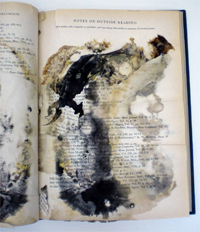Tip 8: Access and Preservation Go Together
A great amount of ink has been spilled when it comes to the “dilemma” of “preservation vs. access.” I, however, think access and preservation depend on each other for success. If items are not used, how do you know what condition they are in? Without access, digital files can become corrupt or disappear without notice. Friends, it’s two sides of the coin. Some tips to improve access and thus promote preservation:
Provide who/what/when/where for photos and documents.
You can write on the back of photos or documents lightly with a pencil, or take a digital image and add the information to the digital file. Be sure to put these in a safe location, or transfer the files regularly.

Inspect items regularly
Take things out occasionally and inspect them for mold and insect activity. Be sure they are clean and have no damage.
Organize and identify items
Label enclosures adequately so you know what is inside. This will also reduce rumaging through boxes to find what you need.
Give displayed items a rest
Rotate displays to give items a break from being out, and to show off other items. This gives you a chance to inspect items regularly, too.
Document your documents
Document items for insurance purposes should disaster strike (describe valuables and take pictures of them, perhaps part of a home inventory).
Tip 9: Be An Informed Consumer
There is a lot of misinformation out there when it comes to preservation information and conservation instructions. You need to be an informed consumer when you are searching the web or watching television. There are some excellent online resources out there that offer solid advice including these:
Library of Congress Preservation Directorate
Northeast Document Conservation Center
Conservation Online
National Archives and Records Administration
Lyrasis
American Institute for Conservation
ALA Preservation and Reformatting Section
National Archives of Australia
British Library’s Collection Care Department
Tip 10: Leave the Repairs to the Professionals
 Sure, you can tape book pages together or attempt DIY book repair, but if your collection is valuable to you sentimentally or monetarily, it is best to consult a professional conservator. A good conservator will give you a range of options from an enclosure to full treatment and should be able to discuss with you, in plain English, what your choices are and how they will affect your material. Do not be afraid to ask questions. We conservators love to talk business. We also love to talk food…but that is a completely different blog post.
Sure, you can tape book pages together or attempt DIY book repair, but if your collection is valuable to you sentimentally or monetarily, it is best to consult a professional conservator. A good conservator will give you a range of options from an enclosure to full treatment and should be able to discuss with you, in plain English, what your choices are and how they will affect your material. Do not be afraid to ask questions. We conservators love to talk business. We also love to talk food…but that is a completely different blog post.
Thanks For Reading
We hope you have enjoyed our Preservation Week blogging. If you have learned something new or taken any advice, we would love to hear from you on what you did to protect your personal collections.


 Digital objects
Digital objects

